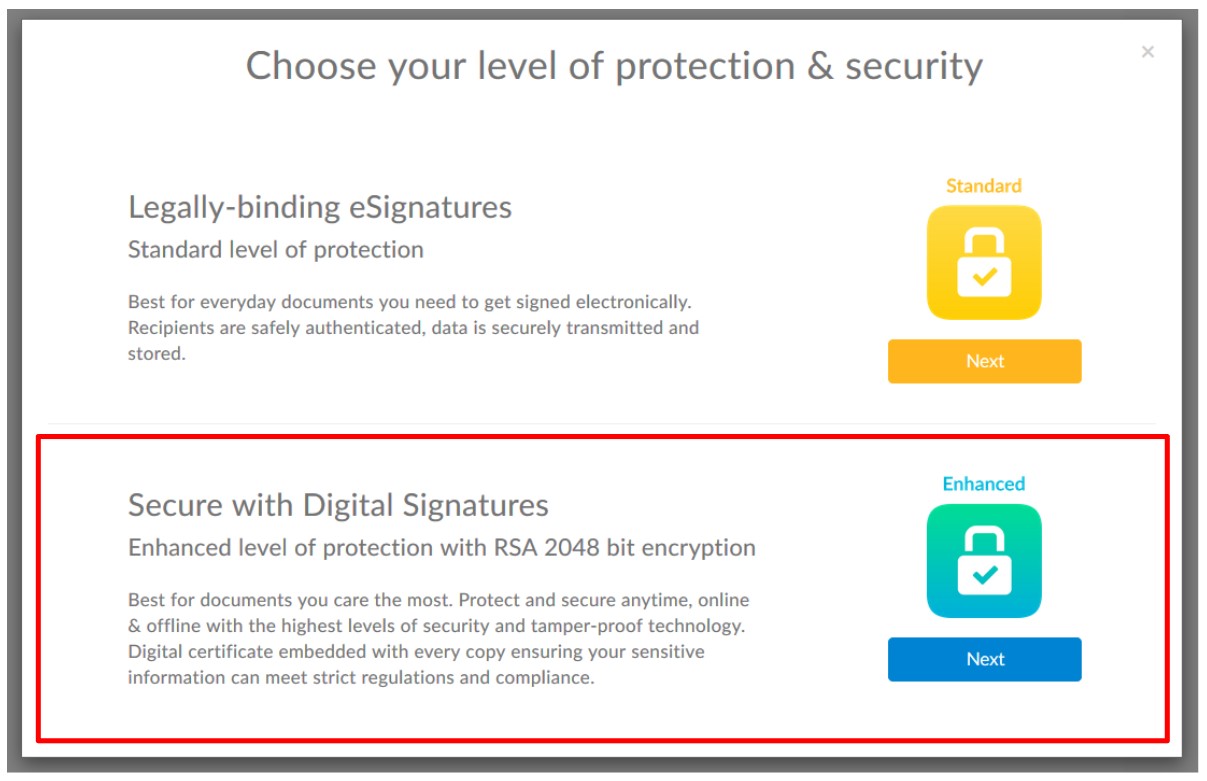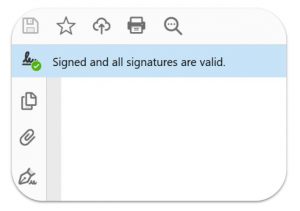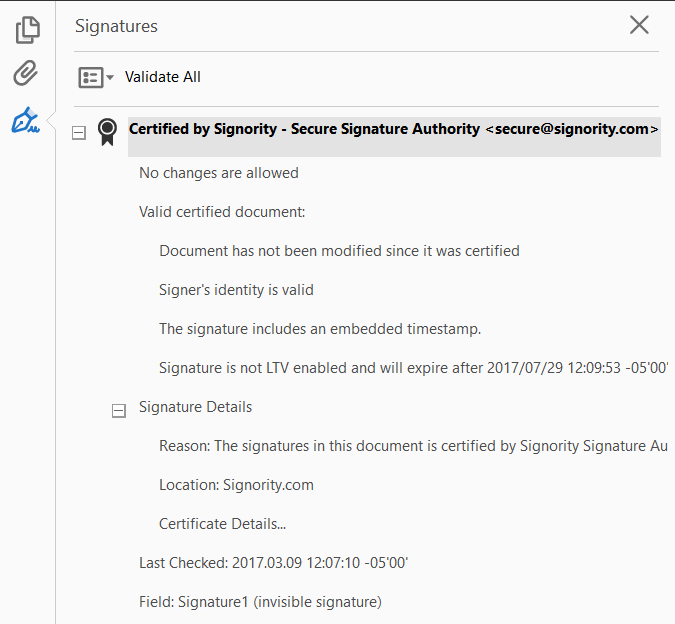Benefits of Digital Signatures
You may have heard the term digital signature thrown around frequently and many consider it synonymous with electronic signature. In this post, we’ll go over the benefits of digital signatures and touch on how they differ to help you decide which is the best option for you!
What is an Electronic Signature?
First, by definition, an electronic signature is simply information in electronic form that captures the intent of a signer. This means that the “signature” can be in the form of a symbol, typed text, or even image or sound, as long as the intention is present and captured. By law, this will make the signature and document legally-binding and accepted. Therefore, if the person’s association and intent are both demonstrated in the signature, then the document is legally accepted. The person’s association and intent are both captured in the audit trail. For more information about the audit trail, check out our blog post on the anatomy of an audit trail. You can learn more about electronic signatures in our whitepaper “A Brief Introduction to eSignatures“.
What is a Digital Signature?
So how is a digital signature any different from an electronic signature? Well, technically, a digital signature is a form of electronic signature that further improves the security and authentication of the signature.
Digital Signatures work as an extra protective layer on top of electronic signatures, rather than replacing them. When a document is digitally signed, a cryptographic operation binds an Adobe-verified digital certificate to the PDF file data, creating a unique digital “fingerprint”. The digital certificate and the unique fingerprint are what makes digital signatures so viable.
If you’d like a more technical breakdown of how digital signature technology works, check out our whitepaper on the breakdown of digital signature and its differences to eSignature.
In Signority, to use digital signatures on the documents you send out is simple. When you click on the “Send” button in the Document Editor, just choose the “Secure with Digital Signatures” option. When the document is signed by all your signers, a digital signature will be applied by Signority onto the finalized document.

Benefits of Digital Signatures
As a result of Digital Signatures, you can be assured of 3 things:
- Signer identity is valid – you will know that the signers are who they say they are
- Tamper-proofing – you can be ensured that the document hasn’t been tampered with, otherwise, the signature would be invalidated
- Non-repudiation – the signer cannot deny having signed the signature and it is possible to prove intent in court
This is shown through the final PDF document that comes from Signority. When you open a document with a digital signature in a PDF reader, you will typically see a message that verifies and authenticates the signing process. For example, all versions of Adobe Reader will automatically verify a digital signature on a document. If the digital signature is valid, then a blue banner with a green check-mark will appear at the top.

If the document is ever tampered with, with either Photoshop or a text editor, you will notice a warning sign when you open the document in a PDF reader like the one shown below.

You may also get a warning sign with a red ‘x’ like the one below saying that the certification is invalid.
![]()
In both cases, you should take the precaution to check the contents of the document, since they could be compromised.
Clicking the Signature Panel button on the right of the banner in Adobe Reader brings up further details about the signing process. You’ll see a sidebar appear with the following information shown for the signature. You can see that it gives plenty of information on the signing process, such as the validity of the signer identity, the timestamp, etc. Clicking on the Certificate Details… will also bring further information, including the public and private keys used to encrypt the document.

You can see the benefits of digital signatures already with the level of encryption information stored directly in the file. These documents will be secured forever regardless of what happens to the involved parties!
You can learn more about digital signatures and whether it’s best for you by checking out our whitepaper on the breakdown of electronic signature vs digital signature here.
Further Reading
Are Electronic Signatures Legally Binding?
The Breakdown: Electronic Signatures vs. Digital Signatures Blog post
Electronic Signature Authentication using Email and SMS

